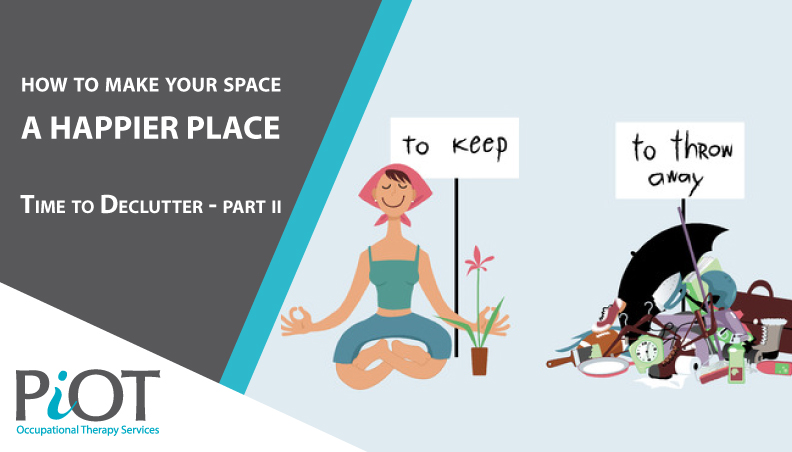
23 Apr Spring Forward – Time to Declutter Part II – Where To Begin
Tackle one project group at a time. Break things down into manageable sized projects. Start with one category at a time, such as clothing, papers, knick knacks, photographs, etc. If that is too daunting, think smaller. Start with clearing one closet, one drawer, one shelf, etc. When it is done, that will give you the confidence to continue clearing more.
Start with 4 labelled bins and be firm in your decision – Keep, Donate, Trash and Revisit. For visual reinforcement, make the Revisit bin the smallest one. Go with your first impulse when you see the item, and once it is in a bin, leave it there and move on to other items. When the bins are full, sort the contents accordingly and be proud of the space you have cleared.
We tend to collect more than we need, donate to places that distribute to new immigrants, social service agencies that distribute to vulnerable people, or those in emergency situations. Make sure that your donations are in good condition. During pandemic, many social service agencies are closed but you can still donate through GiveBack Canada. This is a service that offers touchless donations from depot locations, as the need for donations still continues through pandemic times. To learn more about this service, please see www.givebackcanada.ca
The top 3 categories that tend to cause clutter are clothing, collectibles, and paper
1. Clothing, shoes, accessories
Ask yourself, would you buy that today? Do not overthink, if you need to think about it for any length of time, you can probably do without it. Do not keep anything you are waiting for to come back into style, or dream that one day, you will again be the size you once were. If you reach that goal, you will likely not want your old things. Partner with a buddy to reach a donation goal, for example, fill 5 bags of clothing donations. Then after they are donated you can treat yourself with one item that you bought yourself as a reward for a job well done.
2. Collections of knick knacks, other items
The joy of a collection is in what it represents for you, not in the sheer quantity of items. Photograph the entire collection and then select 1 or 2 items that best represent the collection for you. That is what you will keep in order to remind you of the memories. The memories will not diminish if you don’t keep all of it. Perhaps someone else would like a gift of an item out of the collection to enjoy the memory as well, but donate the rest. If it might have some historical value, consider donating to a museum or club that would appreciate it.
3. Paper
Papers that are important can be scanned and digitally filed, and accessed as needed. If they are outdated, or otherwise no longer relevant, sensitive documentation should be shredded and recycled.
Some people keep every piece of artwork, project, and notebook from every year of school for every child. This can accumulate. Select one or 2 pieces to represent each year. Photograph the rest, if you wish, before disposing of the excess.
Books and magazines may be donated to senior’s facilities, community groups or schools and recreational programs to be used for arts and crafts projects. Keep in mind that back issues of magazines can usually be found online if you ever need to reference them.
Photographs tend to easily collect, and you may find yourself with boxes of old photos, many blurred pictures, duplicates, and photos that you just don’t recognize. They are not bringing you any pleasure being stored away, so purge them and pick your favourites to display in your home or office. Old photos can be scanned, organized into virtual albums and stored in the cloud. There are also programs for digital enhancing and restoration, so you can make them look better than they were. Be prepared to spend a lot of time on photos as they are bound to cause you to sidetrack for a trip down memory lane.
You should notice a feeling of accomplishment and lightness by now. What a great start to your decluttering journey. Keep going….

